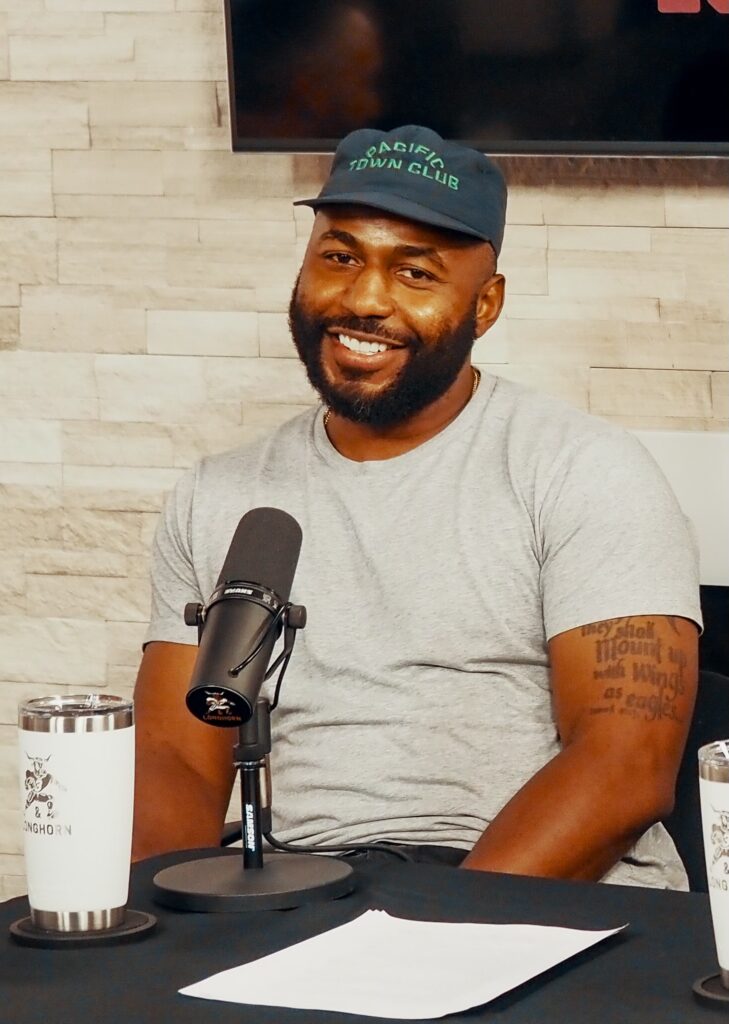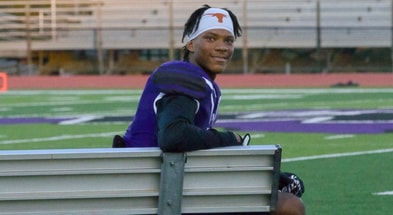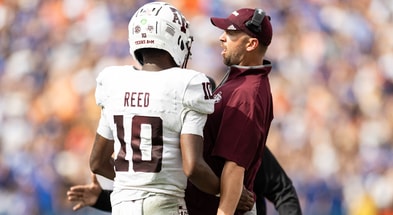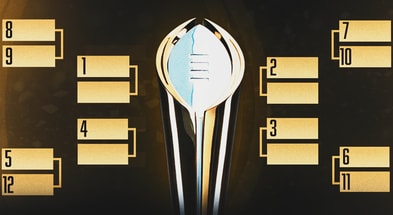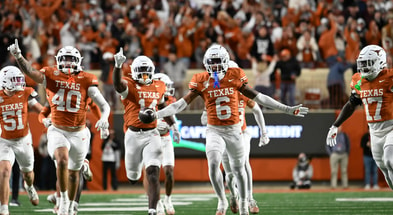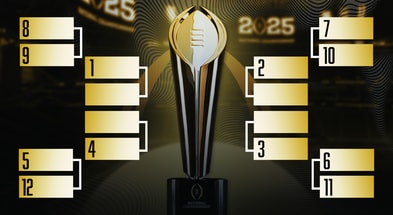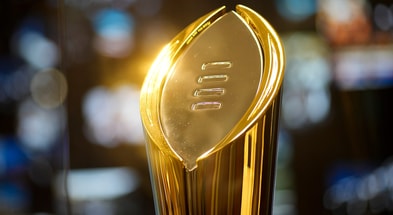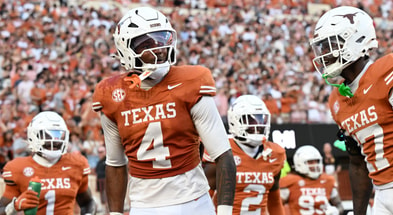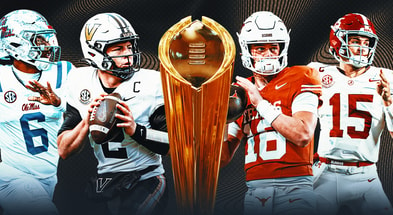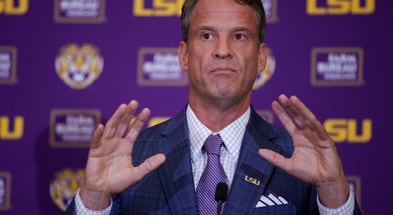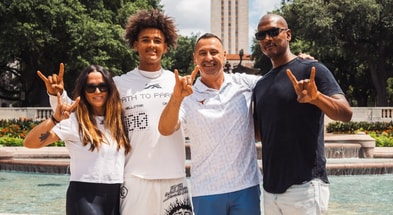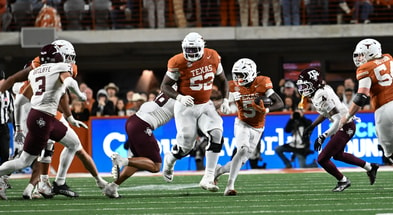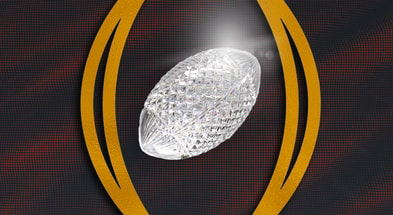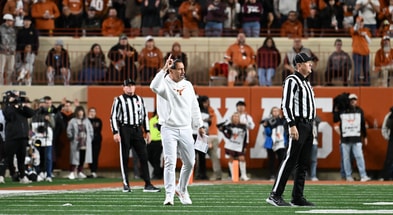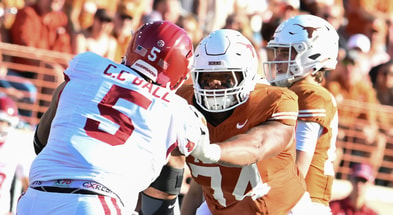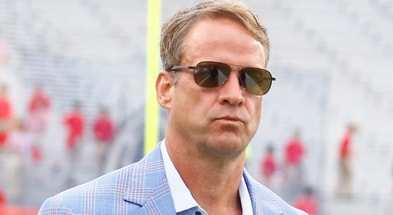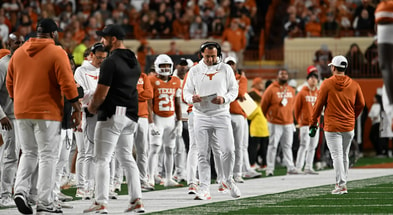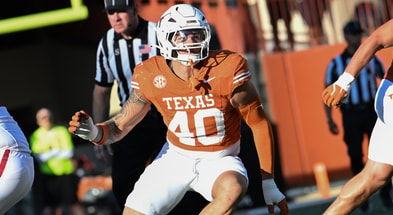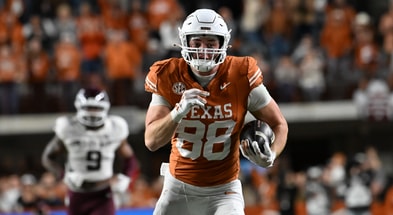Dear Texas: A Letter from Longhorn John Chiles
John Chiles of Mansfield Summit played for the Longhorns from 2007 to 2010 as both a quarterback and wide receiver. The top-ranked athlete in the country in the class of 2007, Chiles was a starter on the 2009 Texas team that won the Big 12 and played for a national championship. After a six-year professional career in the NFL and CFL, he transitioned into directing and producing sports documentaries.
Chiles is the featured interviewee in this week’s episode of 3rd and Longhorn. In partnership with our friends at 3rd and Longhorn and John himself, we’re proud to share his heartfelt letter to Texas and Longhorn fans. Subscribe to 3rd and Longhorn and don’t miss John’s or any episode throughout the season.
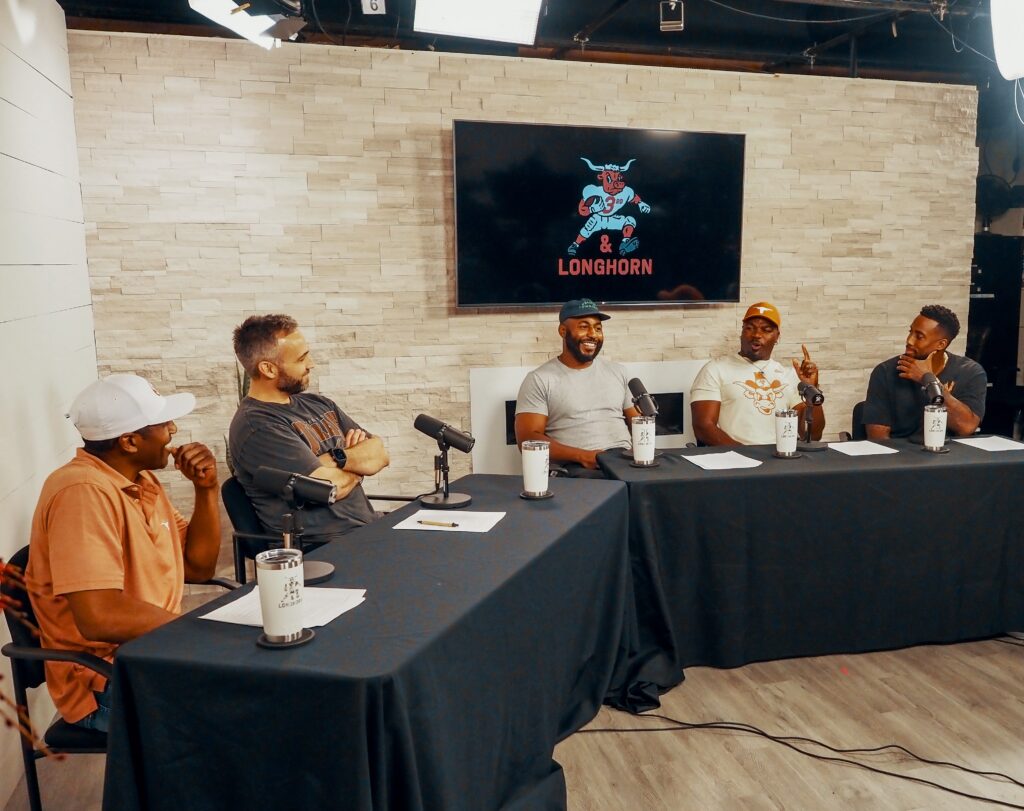
Dear Texas,
No matter how things turned out, I think I was always meant to wear burnt orange and white.
When I was being recruited out of Mansfield Summit, I used to have to go into my coach’s office at lunchtime just to narrow down the schools that were recruiting me. My coach, Kyle Geller, had the names of dozens of schools written on a whiteboard.
[Sign up for Inside Texas TODAY and get the BEST Longhorns coverage!]
There were so many schools, like Clemson, who at the time I couldn’t have told you what state they were in. We’d cross off the names of schools where I knew I wasn’t going so the coaches could stop wasting their time—just to make the process more manageable. Sorry, Iowa.
There was Oklahoma, my first scholarship offer. Notre Dame, an amazing education. Stanford, where my mom (Chandra) wanted me to go. But I could only ever think to ask one question: “Has Texas called? Have the Longhorns reached out?”
I couldn’t get the memories of Fair Park with my family and my dad (John Sr.) out of my head. The tailgating, the smells of the corny dogs and fried food. But more than anything, the pride of being from the state of Texas. My older cousin, Mark Chiles, loved the Longhorns and used to always tell me: “It’s Texas. If they offer you, that’s the one.” When the Sooners offered me first, he told me congratulations and that he’d support me, but he wasn’t going to come to any of my games. And Oklahoma was willing to do whatever it took to get me to Norman—and those were the days of NIL before NIL.
I kept asking Coach, “Any word from Texas?”
Then finally, my mom found an interest letter Bruce Chambers sent under a stack of unopened mail. It was a done deal after that. Texas was always going to be my college. I couldn’t say no to representing the state of Texas, the pride that comes with that, my family’s legacy.
I had been hooked ever since I went to my first game in Austin and saw the smoke coming out of the tunnel at DKR. I saw guys like Derrick Johnson and Vince Young and the pride they showed in wearing Texas across their chest, and I wanted to be like them. I felt the energy from the crowd as B.J. Johnson caught the game-winning touchdown against Texas Tech, and I had to be a part of it. I couldn’t get enough of Austin. Then, guys like Brian Ellis ushered me and Tray Allen onto the team and it felt like family.
I remember being on the phone with Mack Brown and VY just three months after the Longhorns won the national championship. I told all my friends at school: “I just talked to Vince Young!” How could I say no to that?
Plus, back then, the best players went to the best schools and competed. I wasn’t going to run from that just to start at TCU or Baylor. The depth chart didn’t matter—I thought I could come in and compete for the quarterback job and be the next great quarterback.
But things don’t always go as smoothly as you envision them.
Before I got to campus, everyone thought it was going to be Jevan Snead at quarterback—until it wasn’t. Jevan looked the part and could throw the ball a mile. But, Colt McCoy was super competitive too and he didn’t just rely on natural instincts or athleticism.
I hoped I would redshirt my freshman year. After all, I was recruited just as heavily on the basketball side as I was for football. Because of that, I never played football for 12 months straight. I’d always traded in the cleats for sneakers each offseason.
But during my freshman year, 2007, an injury to Sherrod Harris made me Colt’s backup. And I was featured in some wildcat packages where I came in and played well. I got in the end zone. Every time I got on the field, I felt like I was in a pressure cooker. I had this weight on me to live up to the hype of being the number one quarterback, the best athlete in the country.
As for Colt, what I respect so much about him is that every time I felt like I got on his heels, he went up a level. During summer 7-on-7, I’d flash in spurts and I’d go 8-for-10, but he’d come right behind me and go 10-for-10.
Still, I thought the path to playing time was clear. I’d have two years after Colt left for the NFL. After all, the coaches told me after a coaches’ retreat they did a draft of all the players on the team, and I was selected in the top five by every single coach. It was Colt first, then Brian Orakpo, then me at three—or somewhere in the top five.
I felt like I was close.
Then 2008 came and I played less than I did the previous season.
Towards the end of that fall, Coach Greg Davis called me and Sherrod Harris into his office and said, “We have a new quarterback coming in—Garrett Gilbert—and we want to give him a shot.” I never wanted to leave Austin, but I had to play. But, I needed to find a way on the field. I fell in love with football because of the physicality of it, the contact, the camaraderie. I couldn’t ride out my time in Austin on the bench, only to graduate and have to find a real job without ever fulfilling my dream.
My truck was packed and I texted Michael Crabtree, of all people: “I’m done with this place, I’m out of here.” Crab went to school with another cousin, Vincent Williams, at Dallas Carter and was a star quarterback before moving to wide receiver in college at Tech. He immediately called me and said, “Stay there. Don’t transfer. Switch to wide receiver. You can get to the next level.”
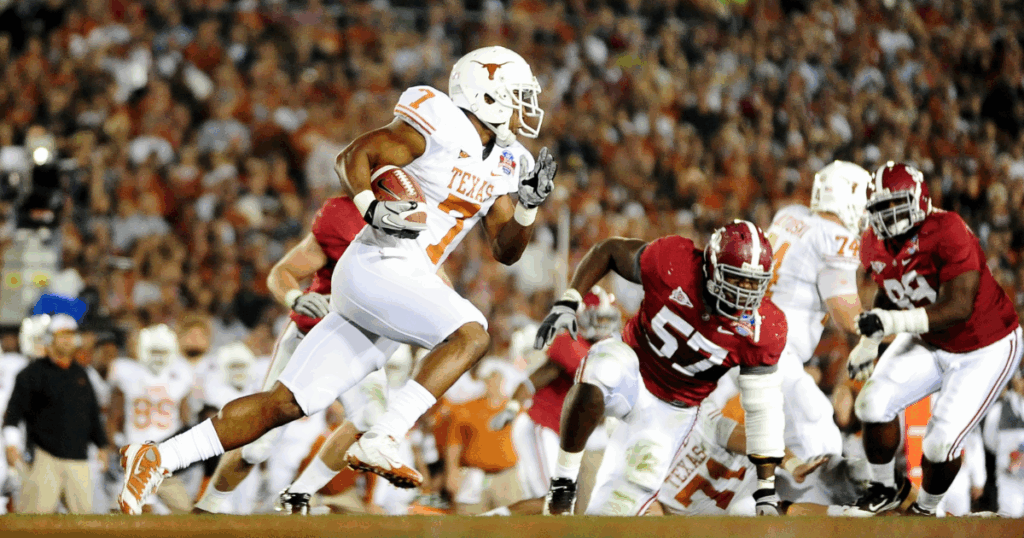
So I told the coaches I wanted to stay here. By the end of the day, it was done. The coaches talked to Mike Tomlin of the Steelers, who gave Coach Brown examples of other players who made the switch from quarterback to wide receiver and how valuable it was for their team. They believed I could do it too.
Though I was excited to prove myself at a new position, it was still a blow to my psyche. Being a quarterback had been a part of me and everything I was trained to be. The quarterback is the one who leads the team. That’s how I saw myself. Even more, there was the historical context of stereotypes about Black quarterbacks that weighed heavily on me—that “they weren’t smart enough or cerebral enough.” I didn’t want to just be another statistic that didn’t make it.
Top 10
- 1Live
National Signing Day
Intel, updates, commitments
- 2Breaking
Brian Hartline
Expected to be named USF HC
- 3
NIL Battles
Recruits that cashed in
- 4
NSD Matters
HS recruiting still wins titles
- 5Hot
Kansas State head coach
Chris Klieman to retire
Get the Daily On3 Newsletter in your inbox every morning
By clicking "Subscribe to Newsletter", I agree to On3's Privacy Notice, Terms, and use of my personal information described therein.
The start of 2009 felt like sweet redemption though. At the beginning of the season, I was starting at wide receiver alongside the great Jordan Shipley and Malcolm Williams. I scored in the first two games and the fact I was starting on a team that would play for a national championship showed me I was who I said I was—even if injuries took a toll on my season.
I think back to the night before the national championship against Alabama at the Rose Bowl and how proud I was, what a reminder it was that I loved football. I wished the younger version of myself who played street football with the older kids in Ennis, Texas, could have seen me. There were these twin brothers who went on to play football in college who would take me to get ice cream after we’d play. “You’ve got it,” they told me.
I was ready to prove myself to the NFL going into my senior season, but I can say confidently that 2010 was the worst year of my life. Not only did we go 5–7 and I got injured on the field, but off the field, things were worse. My parents went through a divorce. I needed to be there for my two younger sisters, Hope and Joy. Then my dad had multiple heart surgeries. Several times, I left Austin in the middle of the week to be in Dallas to take care of him in the hospital. My grandmother had a stroke and that marked the ultimate decline of her health. I could feel the agency I signed with for the NFL pulling back, and I was later dropped. I got picked up by another agency, but they were honest that I was looking at becoming an undrafted free agent since my stats weren’t there.
Then the NFL lockout happened. Normally, a player gets a five- to six-month window after being signed as a UDFA. Because of the lockout, I was signed by the Saints just a few days before camp. I was a quarterback growing up, remember, so during camp I’m trying to learn special teams for the first time. I only had a month with the Saints before I was cut. Then I got signed by the Rams, where I was liked by Coach Steve Spagnuolo—only for him to get fired, and the new regime came in and cleaned house. It honestly felt like I was cursed.
But I wasn’t ready to give up. I went to the CFL and signed with the Toronto Argonauts and starred for them for two seasons. I loved Toronto, but more than anything, I was just proud to be back on the field and proving to myself I could still play—I could really play. That’s what I needed.
When I signed a contract with the Chicago Bears, I realized I didn’t want to go out and celebrate. I wasn’t happy. It was a sign that I needed to figure out who I was apart from football. And I had peace to leave the game on my own terms.
I started to go to therapy, and there I realized my identity was one with football. But football was just something I did—not who I was. I saw that I hadn’t possessed the language or tools to articulate that, or how I was feeling, or what happened to me as an athlete. I wanted to help younger athletes with those things. Because in the next generation, there were young John Chiles. So, I rediscovered my creative side. My abilities as a quarterback translated into a love of creating, directing. Now, I’ve been a producer, creator, and director for almost a decade. I’ve directed for some of the biggest athletes in the world like LeBron James, Jalen Ramsey and Chad Johnson. Though I would still love to work with Texas greats Bijan Robinson and Matthew McConaughey. I’ve also helped revamp the family construction business.
What drives me is when I think about how in the generations before me, there were so many athletes whose stories were lost because there was no library for their stories. We now have that—we have a digital archive to preserve the stories of athletes and help them inform the next generation.
But as for us, Texas, I want to thank you for making little John’s dreams come true. I was the kid who hoped and prayed he’d play for the Longhorns—and he did. I’m so proud to have attended the best university in the world and represented the prestige, the honor and the alumni of the University of Texas.
I can’t say enough about the fans. There were times I thought they’d forget about me, since I didn’t have the most illustrious career. Man, y’all have proven me wrong. Fans still come up to me and pour their hearts out with memories and pride. It’s such an amazing perspective that reinforces the decision I made way back, when we crossed the names of all those other schools off the whiteboard.
Texas helped me discover who John Chiles is. I didn’t run from the competition. It was Texas versus everybody else back then and it still is today. I’m proud to be where I’m standing.
Hook ’Em,
John Chiles
[Be sure to subscribe to 3rd and Longhorn and don’t miss John Chiles’ episode!]
